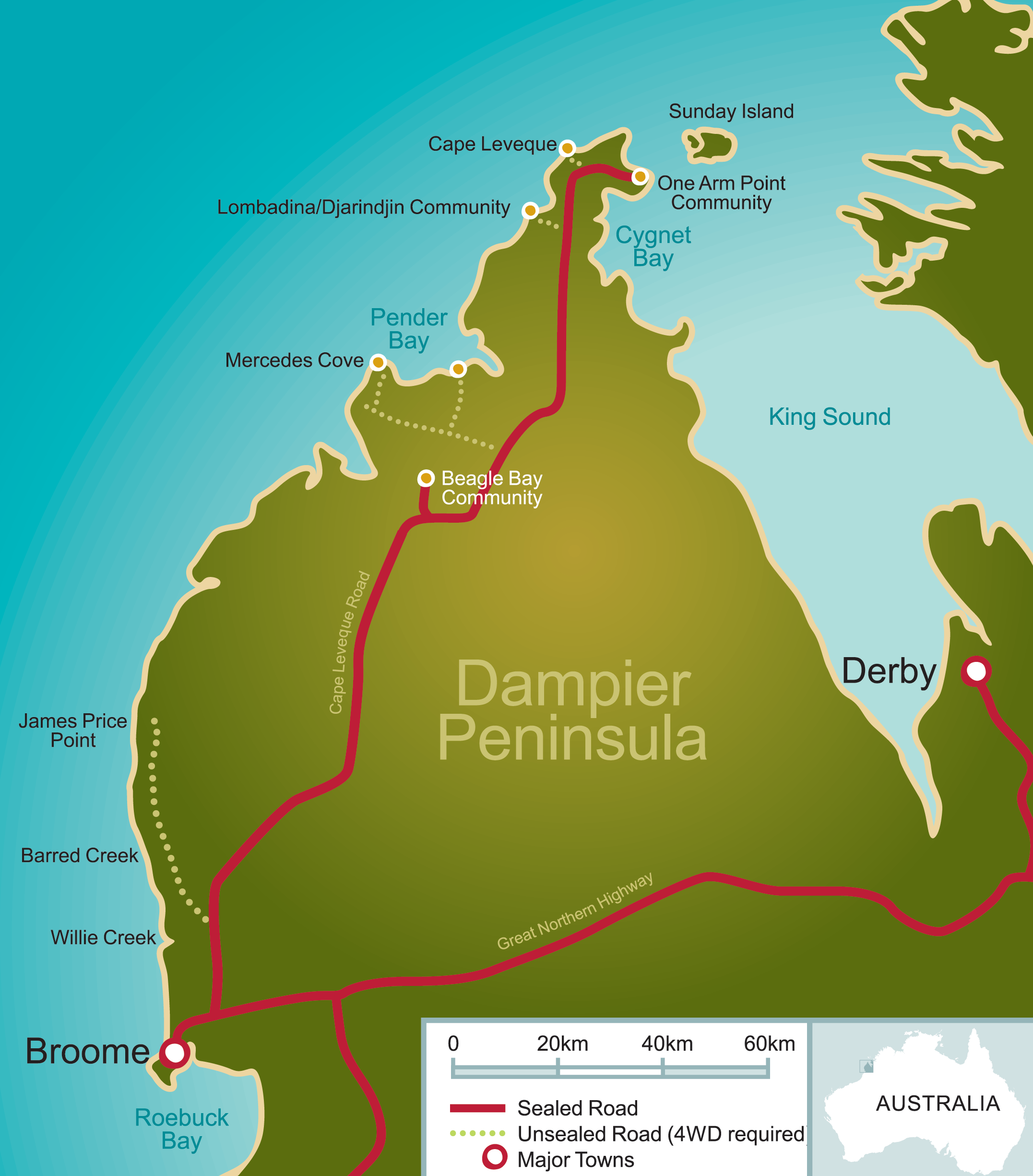Mirning Choreographer Frances Rings and Goolarrgon Bard Visual Artist Darrell Sibosado's collaboration explores the awe of light, a bridge between the physical and spiritual worlds. It charts the impacts of light pollution in a climate emergency.
THE PEOPLE
Originally, Bard people were recognised as the people of the land, while Jawi were the people of the islands. Together, they share systems of kinship, lore and social organisation. Bardi and Jawi Country is divided into seven clan areas, Ollongon, Goolarrgon, Ardiol, Iwanyland Inalaburu, Jawi, Banararr and Buniol. Referring to the Bardi Jawi together aligns the communities to the 2005 Bardi Jawi Native Title Claim, confirming the Bardi and Jawi people’s exclusive possession of over 1000 square kilometres of land, and non-exclusive possession of intertidal and reef zones. Following an appeal in 2010, this native title land and intertidal areas were tripled to over 3000 square kilometres.
SIGNIFICANCE OF PLACE
Situated on the West coast of the Kimberley, the Dampier Peninsula is surrounded by seas to the East, West and North. About 17,000 BCE, sea levels fell to about 150 metres below what they are today. Then as glaciers melted around 7000 BCE, the seas rose and King Sound on the east coast of the peninsula was formed. The Lombadina and Djarindjin communities are in the North West of the Dampier Peninsula and have a population of approximately 200 people.
Walking into the Country of the Bardi Jawi we meet the manawan trees (known commonly as woolybutts) with their blackened trunks, the result of cool weather burning practices. We see the brilliant deep red of the pindan soil and rocks, the white luminous quartz sand, and the iridescent blue waters.
If you arrive in the wet season from December to March, you will experience rain, storms, sometimes cyclones – and relentless humidity. In the dry season, April to November, you will find comfort in the warm days and cool nights.

THE STORY
Many Bardi and Jawi creation stories involve the cultural hero Galaloong, who travelled down the Dampier Peninsula naming places, giving law to the people. Connecting the spiritual and terrestrial place with people and story ensures intergenerational and cultural knowledge has a central belief and value system that lays a foundation for continued evolution and adaptation. For the Bardi and Jawi people, the story of Galaloong represents the genesis of life, a creation story that provides people with a sense of connection to Country and a compass for their own personal journey.
The strong cultural identities of the Bardi Jawi people of today are very much due to traditional lore and protocols being followed and practiced through time, despite the destructive impacts of colonisation and exploitation, including the removal of children, restrictions on cultural practices, forced labour, mining, and other commercial interests. Today’s Bardi Jawi hybrid economy of traditional practices and new business opportunities, focuses on efforts to balance change while ensuring survival.



